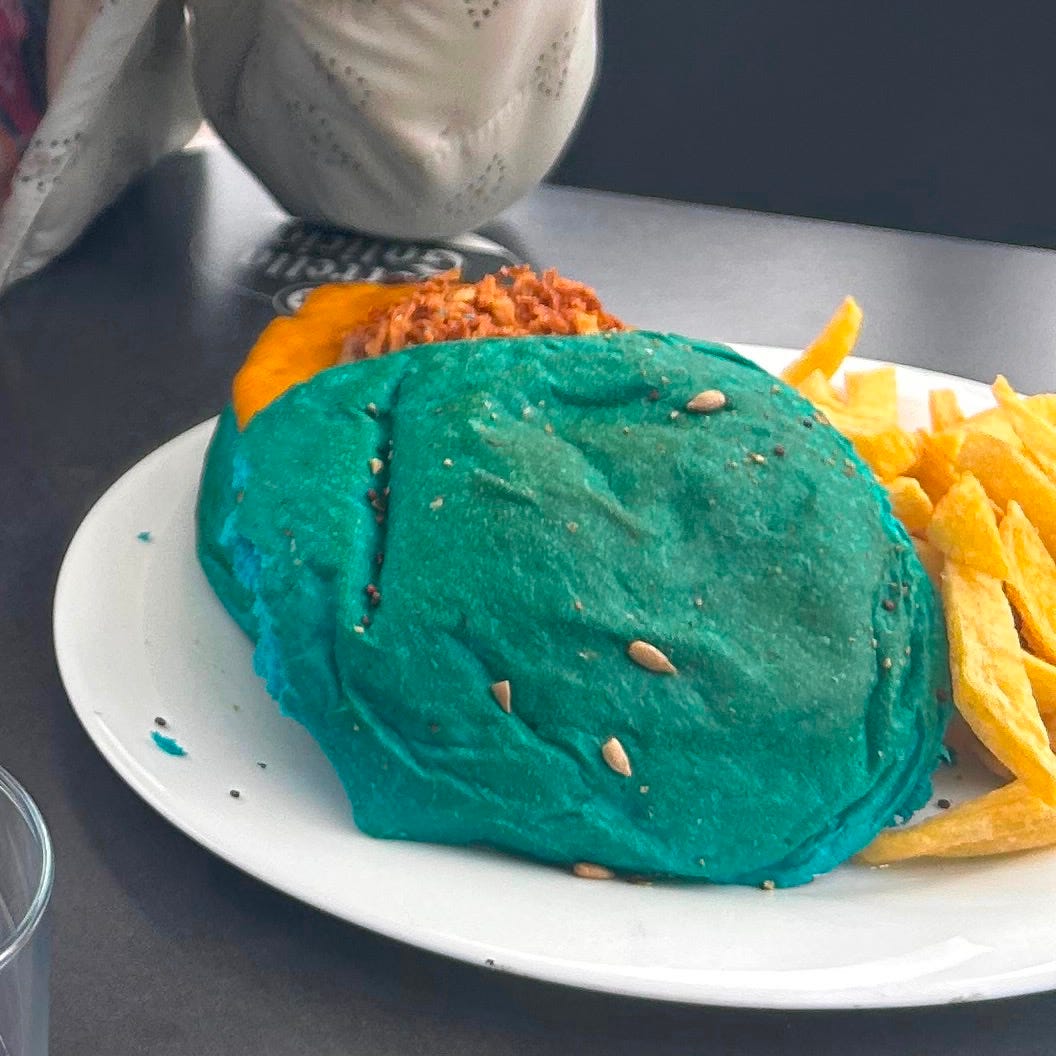When I was in elementary school, my friends and I loved The Smurfs. At recess each day at Roger Wellington Elementary School, we’d play Smurfs. My friend Mark was Papa Smurf, as he was the oldest, having repeated kindergarten. My funny friend Danny was Jokey, my strong friend David was Hefty, and one of the few girls we hung out with, Selby, was Smurfette.
I was Handy, which makes no sense. I have gradually built the basic mechanical competence required to change a tire, paint a room, install a light fixture, and once make a non-disastrous retaining wall, but calling myself “Handy” would be a stretch.
And why did I choose Handy? I mean, Lazy was right there for me. Though if I were being honest with myself, which I was probably disinclined to do at age six, I probably should have been Brainy. I was, and still am, kind of a know-it-all. Really the only difference between then and now is that, thanks to Google, we are living in a dark age for know-it-alls. But aside from a lack of self-awareness, I also couldn't be Brainy because I didn’t wear glasses, and one of the core lessons of being a Smurf is you are what you wear. Of course, it’s not like I walked around with a pencil behind my ear Handy-style. Now that middle-age has robbed my eyes of sharpness, maybe I could try being Brainy again.
It worked out well that we only had one girl in our group, as there was only one part for a girl to play, Smurfette. While we boys didn't notice at the time—after all, most cartoons had only one girl—when we’d look back on our childhood games in high school, Smurfette became the leading indicator that there was something not quite right with the Smurfs.
Identifying the sexism in Smurfs didn't involve a great deal of deep thought. Smurfette was the only girl until they introduced another one named Sassette some years later. Smurfette was not born—or brought by the literal stork as natural Smurfs are—but created by the evil wizard Gargamel via black magic. So there you have it, in the Smurfs world, it doesn't even take a snake and an apple, women are just innately evil!
Looking at the obvious sexism begat looking at other dark undercurrents in the magic forest. According to The Guardian, in 2011, Antoine Buéno, a lecturer at Science Po university in Paris would ruffle all of Smurfdom with his book Le Petit Livre Bleu: Analyse critique et politique de la société des Schtroumpfs, which suggested that the Smurfs were anti-semitic Stalinists. When I first heard this, I was stunned.
“How is this getting press now?” I wondered. “My friends and I were literally talking about this in 1993. And I know there were internet discussions on the subject at the time—how does this guy get away with pretending this is new scholarship?”
Apparently, Buéno nods at his forebears, including a theory I’d never heard before that Smurf stood for “Small Men Under Red Force.” I should probably just read the thing, but I’ll be damned if I’m going to spend a bunch of time reading a French-language monograph on the Smurfs.
There is no evidence that Peyo, the Smurfs’ creator, was a communist, a fascist or a bigot, save for the fact that if you look at the Smurfs closely, it’s really hard not to see the undercurrents. Consider the evidence that my friends and I observed long before Buéno wrote his piece:
When she’s initially created by Gargamel, Smurfette has dark hair. Only when Papa Smurf fixes her with magic does she take on her Aryan blonde.
Gargamel is a pretty rough anti-semitic stereotype. He’s hook-nosed and wants to kidnap the Smurfs so he can literally turn some of them into gold and eat the rest. You’ve got greed and blood libel nicely blended into one. At least he doesn’t wear a yarmulke, I guess.
Gargamel’s evil cat is named Azrael, which is really, really close to Israel. I admit that one’s a stretch.
The Smurfs all dress the same and with no individuality allowed, save for their one defining trait.
The Smurfs uniformly like things that are lame and non-transgressive like Oompa music. They shun fringe artists and intellectuals like Harmony and Brainy.
The easy reading of the Smurfs is that they are communists. The more sophisticated reading is that they are fascists. In one episode, Papa Smurf literally makes a point by asking Hefty to snap a single stick, which he does easily, before asking him to snap a bundle of sticks—a literal “fasces”—which he cannot do.
On the one hand, it’s a pretty compelling case. On the other hand, do I really want to tear down the crowning achievement of Belgian civilization? Tintin has its own problems, and King Leopold was one of history’s greatest monsters, so that leaves us with what? Rubens? Waffles?
This raises the question of why I took my kids to visit the village of Juzcar in Spain, what was the West’s last fascist country as of 2024, to see how they have made their little bit of Andalusia into a Smurf Village.
The answer is that my kids love the Smurfs, and frankly, so do I.
According to Wikipedia, in 2011 Sony España paid the traditionally whitewashed village to paint itself blue to promote the release of a Smurfs movie. 2011 was, of course, the year that Buéno published his Smurfs expose. Coincidence? I think not.
When the promotion was supposed to end, Juzcar’s villagers voted to keep the blue facade after getting 95,000 tourists in six months, far exceeding the 9,000 in a typical year.
It is really, really hard to relinquish little bits of our childhood, even when they take on a darker sheen to our adult eyes. For example, many Dutch are utterly loath to give up Zwarte Piet, the black-faced sidekick to Sinterklaas, the Dutch Santa, despite the fact that it is painfully racist. In another coincidence, both Sinterklaas and Zwarte Piet come from Spain. (Note: My new theory is that Papa Smurf is Santa Claus. They both are magic, have white beards and red hats, and, at least according to the people of Juzcar and the Dutch respectively, live in Spain.) In the U.S. the Little House on the Prairie books persist despite having a dehumanizing, though common for the time, perspective on American Indians. And remember the big controversy about something with Dr. Seuss? Me neither.
I am not too stubborn to let go of something I once loved… if I absolutely have to. Some cases, only require minor editing. Reading Beverly Cleary’s Ramona books with my daughter, I’ve just taken out a bit here and there—mostly about mothers dieting. But in other cases, I just can’t share them with my kids unless someone else goes through the work of modernizing them. As much as I loved Babar the Elephant, the colonial subtext is just too much. Besides, the death of Babar’s father from eating a poisoned mushroom put my friend Danny (aka Jokey Smurf) off mushrooms for life.
The Smurfs have done the work of modernizing—they are trying to be better. In the 2017 film Smurfs: The Lost Village, which my kids strangely call “Grown-Up Smurfs,” the writers take on the sexism of Smurfdom. (Note: Spoiler alert—for a Smurfs movie—that’s right.) In The Lost Village, the Smurfs set out to warn a long lost village of Smurfs about the danger posed by Gargamel and find out that—get this—the other village is comprised entirely of female Smurfs. It’s honestly a pretty elegant solution to the sexism problem. Also, Gargamel specifically states that he is a Christian of Nordic descent…
So that allowed me to visit Juzcar with little ambiguity, at least about the Smurfs themselves. On the other hand, the blue hamburger my children refused to eat created a lot of ambiguity. Same for the baby eel salad my wife accidentally ordered instead of an avocado salad. It tasted pretty good, but there was definitely an Indiana Jones moment when they brought it out and it looked like, as my kids repeatedly pointed out, a plate of worms.
But overall, Juzcar was well worth a visit, and it made me feel less regret about missing the Blue City of Chefchaouen when we were in Morocco last year. Sure Chefchaouen’s blue has the air of antiquity, but if it were really ancient blue, wouldn’t they call it “The Wine Dark City?” And casual research suggests that it was first painted blue in the 30s and completed in the 70s—though no one seems to really know exactly when or why. The Smurfs debuted in 1958, so you can’t completely rule out a connection.








